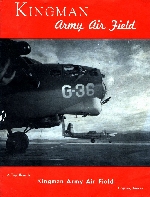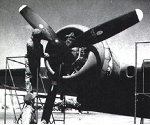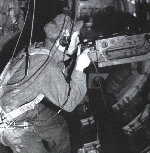2008 - All rights reserved - ArmyAirfieldKingmanMuseum.com

Kingman Army Airfield Musuem
Other Items of Interest
The Boeing B-17 Flying Fortress is an American four-engine heavy bomber aircraft developed for the U.S. Army Air Corps (USAAC). Competing against Douglas and Martin for a contract to build 200 bombers, the Boeing entry outperformed both the other competitors and more than met the Air Corps' expectations. Although Boeing lost the contract due to the prototype's crash, the Air Corps was so impressed with Boeing's design that they ordered 13 B-17s. The B-17 Flying Fortress went on to enter full-scale production and was considered the first truly mass-produced large aircraft, eventually evolving through numerous design advancements, from B-17A to G.
The B-24 originated in a 1938 request by the Air Corps for Consolidated Aircraft to produce B-17's. But Consolidated's engineer, David Davis, had designed a wing suited for long-range bombers, a wing that offered 15 percent less drag than ordinary wings. Consolidated's engineers sketched out a rough version of a bomber using Davis' wing in late 1938. It would be a four-engine, high-wing, tricycle landing gear, dual bomb bay aircraft.
Click any item for large view
Is that the Hualapai Mountains behind the machine gun range?
Also, a 50 calibre cleaning lesson.
A Trip Through Kingman Army Airbase.
From Cover to Cover
Tuneup Time
Live Practice
Pre World War 2 Kingman Army Airfield
Acres of World War II aircraft in storage, awaiting their fate at Kingman, 1946.
Membership To Do Project








